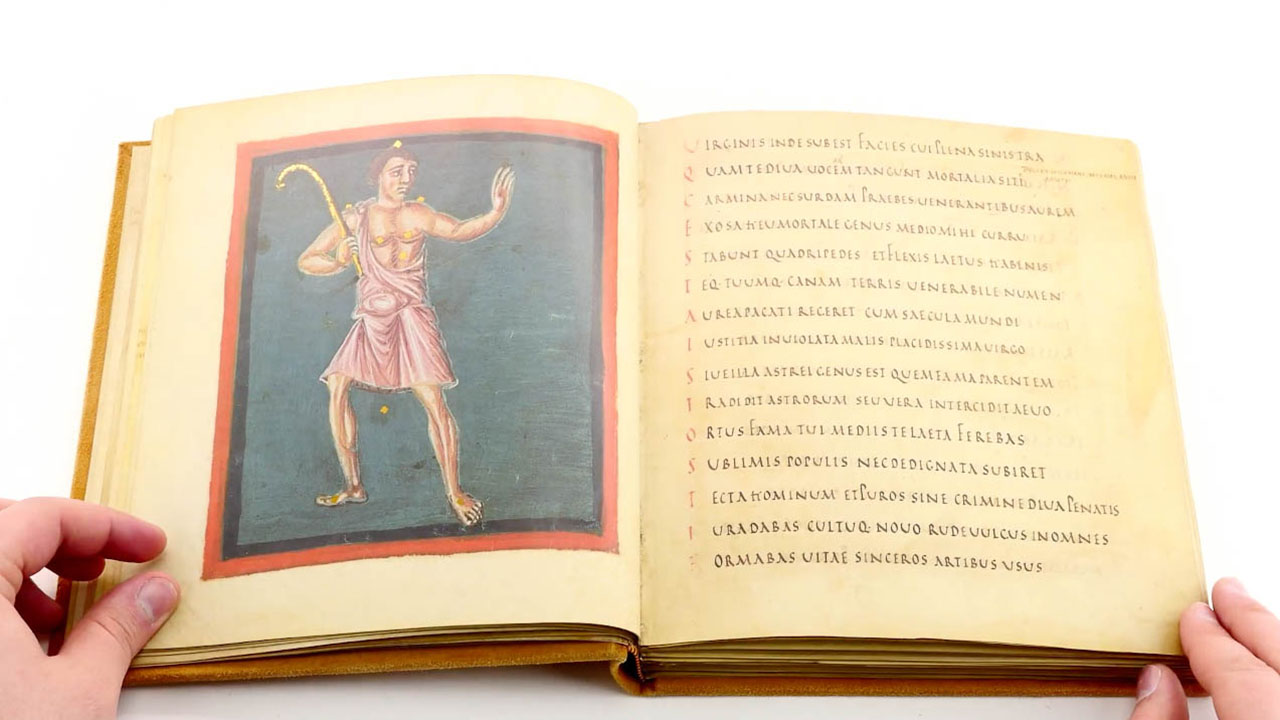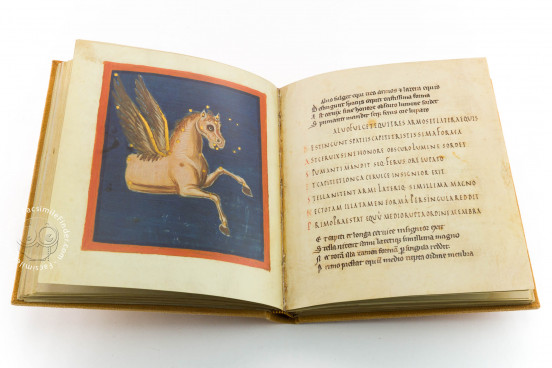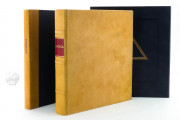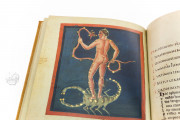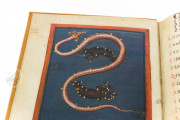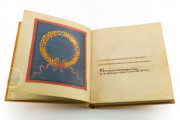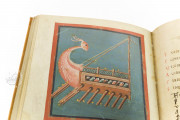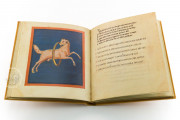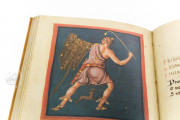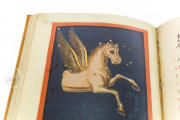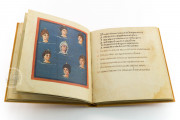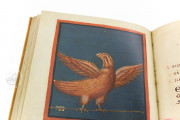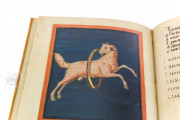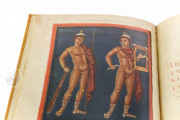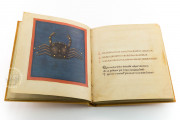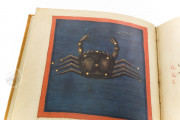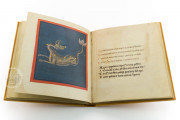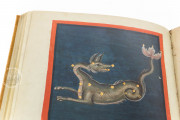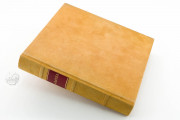Created sometime between 816 and 840 at the court of Louis the Pious, the precise origin and patron of the Leiden Aratea remains unknown. Situated in the aftermath of the educational, cultural, and political reforms spearheaded by Emperor Charlemagne, this luxury codex exhibits the grand cultural ambitions of what came to be called the Carolingian Renaissance.
Germanicus' Latin transcription of the Phaenomena
The Leiden Aratea contains a Latin didactic poem that describes constellations and astronomical phenomena. The original Greek text was a poem called Phaenomena, which was compiled by Aratus of Soli who lived between ca. 315-240/239 BCE.
The Greek was rendered into the 857 lines of Latin verse by a person named Germanicus, and the Leiden exemplar is one of the earliest and most sumptuously illustrated manuscripts of its long and vast transmission.
Featuring thirty-nine full-page miniatures, the constellations personified into figures were originally conceptualized long ago as an aid to identify and memorize individual stars and their positions in the sky. At least five other miniatures would have originally been included in the manuscript but are now lost.
Thirty-six full-page illustrations depict the forty-two constellations and the Pleiades, while the two subsequent full-page images illustrate the mythological personification of the five planets and the personification of the four seasons.
Set on a blue background within a red rectangular frame, these miniatures represent the form of the god, hero, animal, or instrument that the respective constellation's arrangement suggested to ancient viewers of these celestial bodies. The twinkling stars of each constellation are highlighted in gold leaf, along with some of the ancillary accessories held by the figures.
Bringing us to a total of thirty-nine full-page miniatures, the final image is a diagram that illustrates the configuration of the planets on March 28, 579. Lacking the requisite blue background and red frame, its roundels representing the twelve months, the planets, and the moon are all highlighted in gold.
A Carolingian "Facsimile"
Given the style of the miniatures and the nearly square format of the codex, the Leiden Aratea is very likely a careful copy of a Late Antique exemplar. At the time of its creation, the preservation of classical sciences and cultural heritage was considered one of the noblest tasks of scholarship.
As discussed, it is also clear that the book was used to make other copies in later centuries. Some margins of the (often trimmed) pages of the Leiden Aratea contain instructions to the artists that describe the desired image.
On f. 3v, for instance, an inscription detailing "[arctur]us maior et [mino]r cum serpente" is found to the left of the miniature depicting Draco along with Ursa Major and Minor. Seen best in raking light, the blank sides of the miniatures also bear traces of outlines of the figures' contours, perhaps denoting direct tracing.
Capitalis Rustica
The miniatures are all placed on the verso pages followed by passages of the text describing the subject on the corresponding recto. As a work of didactic poetry, the text is laid out verse-by-verse and each line is opened with a red capital. Narrow rustic capitals (capitalis rustica) are used here, a script reserved for fine books and to highlight the antiquity of the sources.
A later owner rewrote the main text throughout the late 13th century in a Gothic hand. It might be that the rustic capitals were no longer easily legible to readers of that time. While constituting an unfortunate blemishing of the generous margins of the manuscript, it shows that the book was still consulted more than four hundred years after its creation.
Copied and Collected
The opening verses of the Leiden Aratea contain Germanicus' dedication of the book to a member of the imperial family of ancient Rome. This suggests that this copy was also originally made for a member of the ruling family or someone in the court's inner circle.
Several experts believe that Judith, the second wife of Louis the Pious, was the intended recipient. Others point to the anonymous author of the biography of Louis the Pious as the potential patron. A marked interest in the planets, stars and their movements is demonstrated throughout the biography, inciting later scholars to nickname the author "the Astronomer".
The Aratea was likely kept in the Abbey of St. Bertin in northern France and was there at least by the year 1000, which is indicated by two copies of the manuscript that were produced there at this time.
Its trajectory is unclear until 1573 when it moved to Ghent and became the property of the humanist Jacob Susius, the Lord of Grysenoordt. By 1600 it was owned by Hugo Grotius, who used it for his printed edition of the Syntagma Arateorum.
The manuscript made its way around 1650 into the Stockholm library of the renowned bibliomaniac Queen Christina of Sweden, who assembled an unparalleled collection of rare books and manuscripts. Upon her abdication in 1654, her librarian Isaac Vossius chose this book (among others that initially filled a shipment of ten trunks) to settle the outstanding bill for his unpaid wages for his services maintaining the vast library of the queen. After Vossius died in 1689, his library was purchased by the university in Leiden.
We have 1 facsimile edition of the manuscript "Leiden Aratea": Aratea facsimile edition, published by Faksimile Verlag, 1987
Request Info / Price
